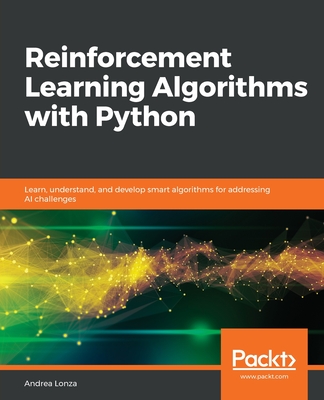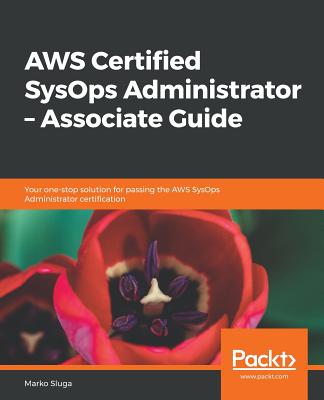Hands-On Neuroevolution with Python
暫譯: 使用 Python 的實作神經進化
Omelianenko, Iaroslav
- 出版商: Packt Publishing
- 出版日期: 2019-12-24
- 售價: $1,770
- 貴賓價: 9.5 折 $1,682
- 語言: 英文
- 頁數: 368
- 裝訂: Quality Paper - also called trade paper
- ISBN: 183882491X
- ISBN-13: 9781838824914
-
相關分類:
Reinforcement
-
相關翻譯:
Python神經進化網絡實戰 (簡中版)
商品描述
Neuroevolution is a form of artificial intelligence learning that uses evolutionary algorithms to simplify the process of solving complex tasks in domains such as games, robotics, and the simulation of natural processes. This book will give you comprehensive insights into essential neuroevolution concepts and equip you with the skills you need to apply neuroevolution-based algorithms to solve practical, real-world problems.
You'll start with learning the key neuroevolution concepts and methods by writing code with Python. You'll also get hands-on experience with popular Python libraries and cover examples of classical reinforcement learning, path planning for autonomous agents, and developing agents to autonomously play Atari games. Next, you'll learn to solve common and not-so-common challenges in natural computing using neuroevolution-based algorithms. Later, you'll understand how to apply neuroevolution strategies to existing neural network designs to improve training and inference performance. Finally, you'll gain clear insights into the topology of neural networks and how neuroevolution allows you to develop complex networks, starting with simple ones.
By the end of this book, you will not only have explored existing neuroevolution-based algorithms, but also have the skills you need to apply them in your research and work assignments.
- Implement neuroevolution algorithms to improve the performance of neural network architectures
- Understand evolutionary algorithms and neuroevolution methods with real-world examples
- Learn essential neuroevolution concepts and how they are used in domains including games, robotics, and simulations
商品描述(中文翻譯)
神經進化(Neuroevolution)是一種人工智慧學習形式,利用進化演算法來簡化解決複雜任務的過程,應用於遊戲、機器人技術和自然過程模擬等領域。本書將為您提供有關基本神經進化概念的全面見解,並使您具備應用基於神經進化的演算法來解決實際問題所需的技能。
您將從學習關鍵的神經進化概念和方法開始,並使用 Python 編寫程式碼。您還將獲得使用流行的 Python 函式庫的實作經驗,並涵蓋經典強化學習、自主代理的路徑規劃以及開發自主玩 Atari 遊戲的代理的範例。接下來,您將學習如何使用基於神經進化的演算法來解決自然計算中的常見和不常見挑戰。之後,您將了解如何將神經進化策略應用於現有的神經網路設計,以改善訓練和推理性能。最後,您將清楚了解神經網路的拓撲結構,以及神經進化如何使您能夠從簡單的網路開始發展出複雜的網路。
在本書結束時,您不僅將探索現有的基於神經進化的演算法,還將具備在您的研究和工作任務中應用這些演算法所需的技能。
- 實作神經進化演算法以改善神經網路架構的性能
- 理解進化演算法和神經進化方法的實際範例
- 學習基本的神經進化概念及其在遊戲、機器人技術和模擬等領域的應用
作者簡介
Iaroslav Omelianenko occupied the position of CTO and research director for more than a decade. He is an active member of the research community and has published several research papers at arXiv, ResearchGate, Preprints, and more. He started working with applied machine learning by developing autonomous agents for mobile games more than a decade ago. For the last 5 years, he has actively participated in research related to applying deep machine learning methods for authentication, personal traits recognition, cooperative robotics, synthetic intelligence, and more. He is an active software developer and creates open source neuroevolution algorithm implementations in the Go language.
作者簡介(中文翻譯)
Iaroslav Omelianenko 擔任首席技術官 (CTO) 和研究主任的職位超過十年。他是研究社群的活躍成員,並在 arXiv、ResearchGate、Preprints 等平台上發表了多篇研究論文。他在十多年前開始從事應用機器學習,開發移動遊戲的自主代理。過去五年來,他積極參與與應用深度機器學習方法相關的研究,涵蓋身份驗證、個人特徵識別、協作機器人、合成智能等領域。他是一位活躍的軟體開發者,並在 Go 語言中創建開源神經進化算法的實現。
目錄大綱
- Overview of Neuroevolution Methods
- Python Libraries and Environment Setup
- Using NEAT for XOR Solver Optimization
- Pole-Balancing Experiments
- Autonomous Maze Navigation
- Novelty Search Optimization Method
- Hypercube-Based NEAT for Visual Discrimination
- ES-HyperNEAT and the Retina Problem
- Co-Evolution and the SAFE Method
- Deep Neuroevolution
- Best Practices, Tips, and Tricks
- Concluding Remarks
目錄大綱(中文翻譯)
- Overview of Neuroevolution Methods
- Python Libraries and Environment Setup
- Using NEAT for XOR Solver Optimization
- Pole-Balancing Experiments
- Autonomous Maze Navigation
- Novelty Search Optimization Method
- Hypercube-Based NEAT for Visual Discrimination
- ES-HyperNEAT and the Retina Problem
- Co-Evolution and the SAFE Method
- Deep Neuroevolution
- Best Practices, Tips, and Tricks
- Concluding Remarks






























